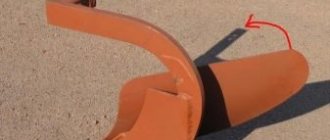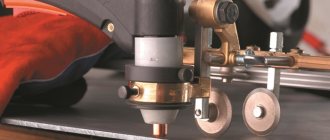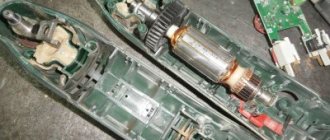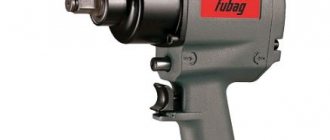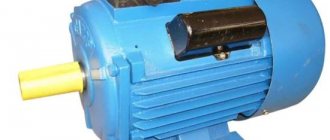How does it work?
To understand breakdowns and fix them, it is important to understand how everything works in a normal situation. For greater simplicity, we will focus only on models with internal combustion engines. Previously, there were two-stroke walk-behind tractors, but now they are increasingly being replaced by four-stroke analogues. Diesel devices are also gaining popularity. As for the transmission, it can be configured in three different options.
The traditional approach involves the use of a gear transmission. Despite a decent level of reliability, this device takes up a lot of space. The force is transmitted using either a cone or a cylinder. Light walk-behind tractors are mainly equipped with a worm-gear transmission. A typical operating principle of a walk-behind tractor controller contains:
- a device that monitors the number of revolutions;
- a rod connecting this device to the throttle valve;
- spring.
The control unit operates on the basis of pneumatic or mechanical connection. “Pneumatic” means the presence of a kind of wing that reacts to the speed of the air flow. Centrifugal options involve placing a special camshaft inside the crankcase. It is complemented by small weights and an easily moving rod. The rod is made of wire, and the sensitivity of the spring determines how accurately the speed values will be maintained.
The role of the valve timing mechanism is to supply a mixture of fuel and air into the cylinder. But the same device also ensures the removal of exhaust gases. To influence the compression ratio, a decompressor is used. Gasoline engines are necessarily equipped with carburetors, which are responsible for preparing the fuel-air mixture. Regardless of the type of fuel, the starting device plays an important role.
What is the role of a walk-behind carburetor?
The operation of the engine power system ensures an uninterrupted supply of the working mixture (fuel and air) to the combustion chamber of the engine. Moreover, the dosage is different: when operating in idle mode, the minimum required amount is supplied, and in working mode, the optimal amount is supplied to provide the necessary traction so that the walk-behind tractor can perform its duties.
You can adjust the carburetor on the Agro walk-behind tractor yourself, without resorting to the help of specialists. All you need is a couple of screwdrivers.
What parts does it consist of:
- float with a needle-shaped valve;
- float chambers;
- the space (chamber) where air is mixed with fuel;
- diffuser, a device for spraying the working mixture;
- throttle valve;
- air and fuel valves with screwed-in calibrated jets.
In this video you will learn how to adjust the carburetor:
The float, together with the needle, sets the gasoline level in the main chamber. As soon as the gasoline leaves, the float lowers and raises the needle, which allows the next portion of fuel to pass through.
The spray device, located between the float and mixing chambers, sends a dose of gasoline into the mixing chamber, where it is mixed with air and then enters the combustion chamber.
This is interesting: How to operate and maintain a gearbox for a walk-behind tractor: we understand all the details
Troubleshooting startup problems
Often, repair of a walk-behind tractor engine is needed because the engine will not start. If this problem occurs after winter storage, you can suspect:
- clogging of fuel or oil with water;
- oxidation of electrical contacts;
- insulation damage;
- the appearance of solid debris in the carburetor.
To prevent these problems, it is necessary to carefully inspect any connections before each start-up. If you notice the slightest tightening of the cable, especially if it is twisted, you cannot start the engine.
Even before the very first start, it is necessary to assess whether there is enough oil in the crankcase. If there is a deficiency, rapid destruction of the piston group is likely. In less than a second, the cylinders will be covered with burrs.
In this case, very serious repairs will be required, and sometimes even replacement of damaged parts. Sometimes instability in the functioning of the device is provoked by leaving the lubricant for the winter. If this is the case, in the first few moments after start-up, clouds of white smoke will pour out of the exhaust pipe. Immediately after this, the power plant will stall.
Diesel walk-behind tractors may also not start due to lack of oil. Only a few models are equipped with systems that protect against a drop in lubricant level. Most people will have to monitor the health of the walk-behind tractor themselves. It is also worth considering that failures occur due to the systematic use of unsuitable fuel. If the usual recommendations do not give much effect, you need to remove the candle and look for oil stains.
Oil, especially carbon deposits, should be carefully cleaned. Then the candle must be dried. The cylinder also needs to be dried. A very simple technique is used for “drying”: repeated sharp pulling of the starter cable. The question often arises: what to do if the walk-behind tractor does not start and smokes black smoke.
Typically, this manifestation indicates that the engine is overfilled with gasoline. You should also be wary of damage to the piston group. If both assumptions turn out to be incorrect, you need to contact the service center. Further attempts to troubleshoot problems on your own may lead to worsening damage.
When violations are associated with a lack of fuel in the working chamber, the spark plug will be dry.
You can deal with this problem if:
- pour out the old fuel;
- thoroughly clean the gasoline or diesel tank;
- clean the air filter;
- clean the fuel hose and nozzles with a jet of compressed air;
- add fresh fuel;
- After opening the fuel line, blow out the channel located in the gas tank cap.
In some cases, the failure is due to gasoline getting into the oil sump. It is necessary to check whether this problem exists after any adjustment or adjustment of the carburetor.
If the lubricant becomes clogged with fuel constantly, you need to look at the carburetor needle. It is likely that this particular node has become a weak point. It is worth noting that sometimes the walk-behind tractor engine shoots into the muffler, and perhaps even with a flame.
The most likely reason is incomplete combustion of fuel. It is provoked by:
- omissions in the ignition system;
- excessively saturated fuel mixture;
- unjustified heating of this mixture.
When the walk-behind tractor does not want to operate, interruptions in the ignition system must be looked for thoughtfully and consistently. Magneto, caps, spark plugs and high-voltage wires are examined.
Finding even minor contaminants is of paramount importance. If everything is clean, you need to inspect the ignition wire contacts. Next, check the stability of the electrodes and measure the distances between them using a special probe.
Possible reasons
Does the walk-behind tractor start and stall? Why is this happening? There may be several reasons why a motorcycle does not start when starting. These include:
And if the jets become clogged
If the Neva walk-behind tractor does not start, the reasons may also be different. Sometimes the problem is hidden in a malfunction of the spark plugs, which play an important role in starting a carburetor internal combustion engine, or the glow plugs, which ensure the start of a diesel engine. If the igniter devices become wet, which happens due to fuel assemblies being thrown into them, the spark begins to disappear in them. In the absence of sparking, the fuel-air mixture is not ignited and, therefore, the engine cannot be started.
This problem can be solved in various ways:
If, upon inspection of a carburetor engine or diesel engine, no defective spark plugs were identified, but difficulties persist, and are also accompanied by popping noises in the muffler, it is necessary to check the functionality of absolutely all devices responsible for the flammability of fuel. A defect in them may also be a reason that the walk-behind tractor does not start. It is more correct to carry out diagnostics in a service center, where specialists will find the cause of the damage and carry out professional restoration.
Motor vehicles will not start even if there is a lack of lubricant in the engine. Certain modifications are equipped with special control sensors, which, if there is a lack of lubrication, prevent the engine from starting.
Particular attention should be paid to those machine variants that do not have such meters. Sooner or later, the degree of the lubricant mixture will reach its limit value, and if it is not compensated to the norm, this will soon lead to wear of the elements and, as a result, to a major overhaul of the engine
Functional failures
Quite often, among the malfunctions of a walk-behind tractor engine, its unstable operation appears. If the engine idles jerkily, and when you try to add gas it stops altogether, the reason is rooted in a lack of fuel. The screens of the fuel tank, carburetor and pipeline valve should be cleaned. And when problems occur even at idle, it is advisable to check the centrifugal regulator. Often the traction jams there.
Let's assume that the walk-behind tractor simply slows down without jerking. In many cases, this is due to the use of incorrectly tuned, unsuitable or simply badly worn motors. But replacing the power plant is not always wise. Installing a better quality spark plug may help. It is also worth assuming that malfunctions in the operation of the carburetor float in the high-voltage wire may occur.
If the walk-behind tractor engine knocks, you need to inspect the camshaft and crankshaft. This is where the sources of extraneous sounds are mainly located.
In all of the above situations, there is no particular need to carry out major repairs. High-quality diagnosis of problems is very important. It is pointless to try to increase the compression in all modern engines; anyway, the decompressor will not allow this to be done.
Principle of operation
Cultivation of the land with a “Master” motor-cultivator is carried out as follows:
- when the engine starts, the translational energy of the piston is converted into torque and transmitted through a gearbox to two short rotors;
- each of the rotors is equipped with a long rod with a cutter placed at the end;
- when the cutters rotate, their sharp knives cut off the upper layers of soil, finely color them and mix them with the lower layers;
- such rotation of the cutters causes the cultivator to move forward while cultivating the soil;
- The depth of penetration of the knives into the soil is adjustable, and if maximum depth is required, the cultivator is weighted with lugs.
Adviсe
In order to repair and adjust the walk-behind tractor less often, it is necessary to protect the motor from falling. This is especially true for products with four-stroke engines. Their maximum inclination during operation cannot exceed 25 degrees. The unit cannot be tilted more than 15 degrees for a long time. Otherwise, you may be afraid that part of the engine will be deprived of lubrication. It will soon fail.
For the same reason, prolonged operation of the walk-behind tractor in idle mode is not recommended. Before starting work, you should always check that there is enough fuel and lubricating oil. These fluids need to be changed and even added only when the engine is turned off.
You cannot start the walk-behind tractor when the levers associated with the wheel drive are locked. A cold engine is started only after the carburetor air dampers are set to the closed position; Always use strictly recommended fuel.
The valves are adjusted using:
- universal wrenches;
- probes of various sizes;
- screwdriver with a flat blade.
For the intricacies of repairing the Subaru ex21 engine for the Neva walk-behind tractor, see below.
All rights reserved, 14+
The use of any materials without our prior written consent is prohibited.
Replacing Piston Rings on a Motoblock
For some information that may be needed when repairing a walk-behind tractor, see the text of the article The structure of a walk-behind tractor.
Engine malfunctions
Engine won't start
. If we are talking about a gasoline engine, when troubleshooting, it is necessary to consistently check all possible causes of problems, namely:
The supply of fuel to the engine cylinder may be indicated by the condition of the spark plug, which in any case must be checked when troubleshooting the ignition system. The spark plug is unscrewed from the cylinder cover, having previously disconnected the wire, and inspected. If it is dry, this means that the fuel mixture is not supplied to the cylinder. And if before this it was established that gasoline is entering the carburetor, then the reason for the engine not starting may be in the carburetor. contamination of its filter mesh, clogging of the nozzle or some other malfunction. Whatever it is, the carburetor needs to be removed, disassembled and cleaned, but this device is very complex and before repairing it you should at least look at the carburetor diagram.
A wet spark plug indicates that fuel is entering the cylinder. Sometimes the walk-behind tractor does not start due to an excess of fuel mixture, so if there is too much gasoline on the spark plug, you need to dry the cylinder by thoroughly “pumping” the engine with a manual starter with the spark plug turned out. Before doing this, you need to shut off the fuel supply.
If the spark plug is contaminated with carbon deposits, it should be cleaned with gasoline and fine sandpaper. It is also necessary to check the gap between the electrodes and, if necessary, adjust it in accordance with the requirements of the operating manual. Typically the gap should be about 0.8mm.
After this, you need to check for a spark. attach a wire to the spark plug, press its metal part against the cylinder cover and simulate starting the engine with a starter. If the spark plug is working properly, a spark will occur between the electrodes. Sometimes it happens that a spark occurs, but it is so weak that it is not enough to ignite the fuel. If you have doubts about the strength of the spark, you need to check the operation of the engine with a new spark plug.
The absence of a spark may mean a faulty spark plug, lack of contact in the electrical circuit, a violation of the gap between the ignition coil and the magnetic circuit, or a malfunction of the electronic ignition coil. All these elements must be checked. A faulty spark plug and ignition coil must be replaced.
If the walk-behind tractor is equipped with an electric starter, the engine may not start due to a discharged battery, a blown fuse, or a faulty starter. You need to check the battery charge, replace the fuse, repair or replace the starter.
The engine does not develop power
. If the walk-behind tractor engine starts but does not develop power (runs intermittently, stalls or does not gain speed under load), the following malfunctions may be possible reasons for unsatisfactory operation.
The air filter is dirty, resulting in insufficient air entering the carburetor, and the fuel mixture is over-rich. Proper maintenance of a walk-behind tractor involves periodically cleaning the air filter, however, very dusty work may require more frequent cleaning. It is necessary to check the condition of the air filter and, depending on its material, clean it using one of the appropriate methods. The paper filter is cleaned by lightly tapping it on something hard and blowing it with a vacuum cleaner, the foam filter is washed in water with detergent and dried, the mesh filter is blown with a vacuum cleaner, etc. When the filters reach the end of their service life, they must be changed.
Related Posts
For additional information that may be useful when repairing your tractor, see Tractor Structure.
Engine malfunction
Engine won't start
. If we are talking about a gasoline engine, then when troubleshooting it is necessary to consistently check all possible causes of failure, namely:
The condition of the spark plug, which in any case must be checked when troubleshooting the ignition system, may indicate the flow of fuel into the engine cylinder. The spark plug is unscrewed from the cylinder cover, having first disconnected the wire and inspected it. If it is dry, this means that the fuel mixture is not being supplied to the cylinder. And if it was previously determined that gas is entering the carburetor, then the carburetor may be the cause of the engine. contamination of its filter mesh, clogged nozzle or other malfunctions. As it is, the carburetor needs to be removed, disassembled and cleaned, but this device is very complex and it is at least worth checking its carburetor circuit before repairing it.
A wet plug indicates that fuel is entering the cylinder. Sometimes the engine block will not start due to too much fuel mixture, so if there is too much gasoline on the spark plug, you need to dry the cylinder by carefully bleeding the engine with a recoil starter with the spark plug removed. Before this, the fuel supply must be turned off.
If the soot is contaminated with soot, it should be cleaned with gasoline and fine sandpaper. You should also check the gap between the electrodes and, if necessary, adjust it according to the instructions. Typically the gap should be approximately 0.8mm.
Then you need to check for spark. Connect the wire to the spark plug, press the metal part of the spark plug against the cylinder head and model the engine, starting with the starter. If the spark plug is firing, a spark will appear between the electrodes. Sometimes there is a spark, but it is so weak that it is not enough to ignite the fuel. If you are in doubt about spark power, you need to test the engine with a new spark plug.
The absence of a spark may indicate a faulty spark plug, lack of contact in the electrical circuit, a gap in the gap between the ignition coil and the magnetic circuit, or failure of the electronic ignition coil. All these items must be checked. A faulty spark plug and ignition coil must be replaced.
If the engine unit is equipped with an electric starter, the engine may not start due to a low battery, a blown fuse, or a faulty starter. Check battery charge, replace fuse, repair or replace starter.
Engine does not develop power
. If the engine block starts but does not produce power (interrupts, stalls, or spins under load), possible problems may result in reduced performance.
The air filter is dirty, causing not enough air to enter the carburetor and re-rich the fuel mixture. Proper maintenance of the engine block requires periodic cleaning of the air filter, but if used very carefully, more frequent cleaning may be required. It is necessary to check the condition of the air filter and, depending on its material, clean it using one of the appropriate methods. The paper filter is cleaned by lightly pressing on something hard and blowing with a vacuum cleaner, the foam is washed with water and detergent and dried, the mesh is blown with a vacuum cleaner, etc. During development, the filter life must be modified.
